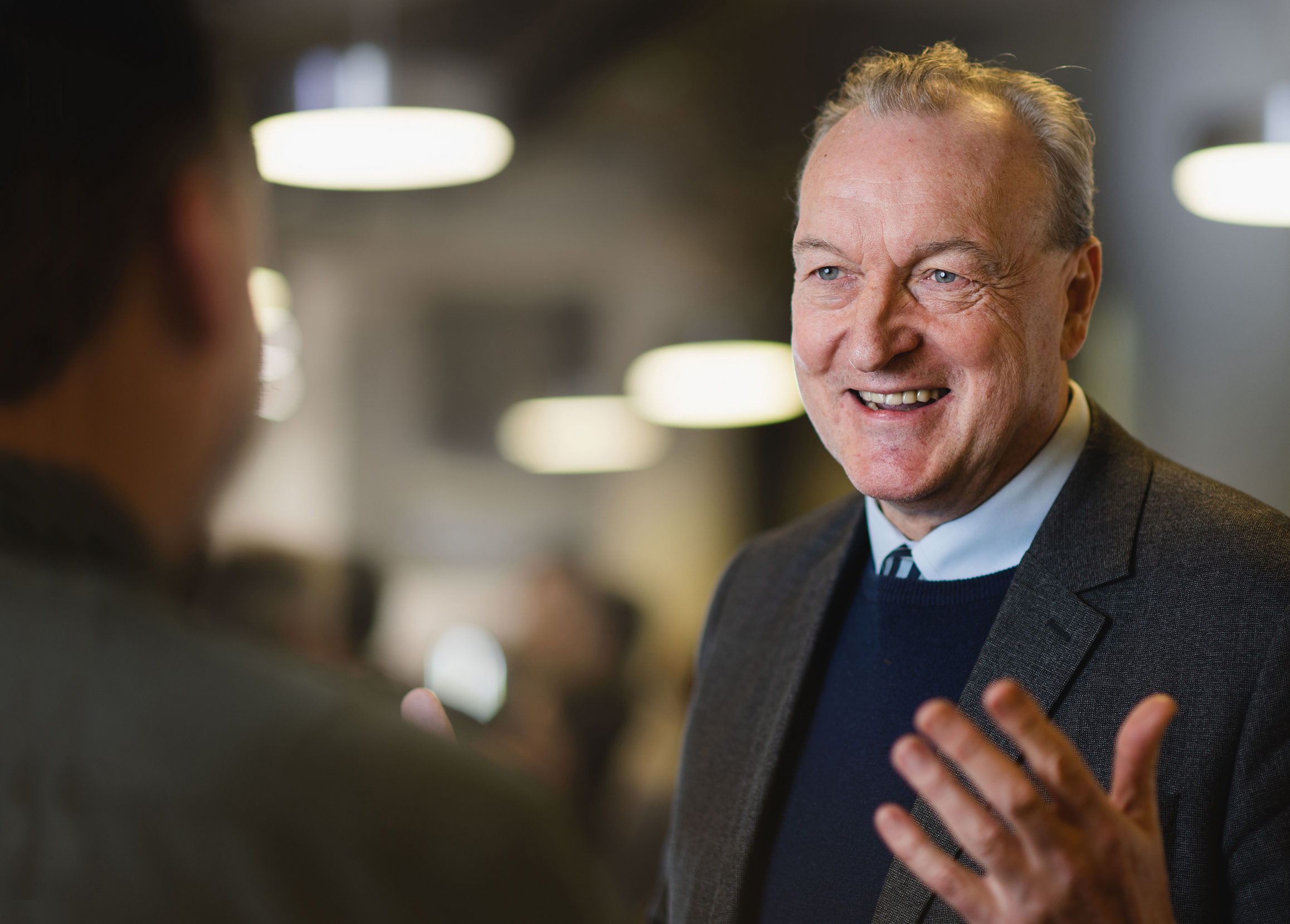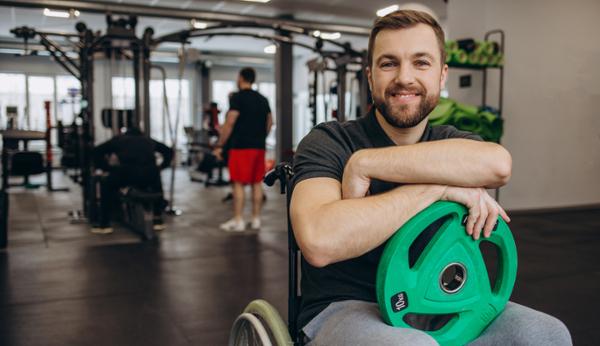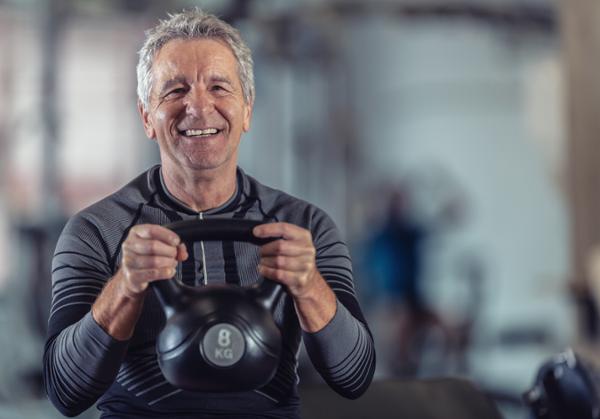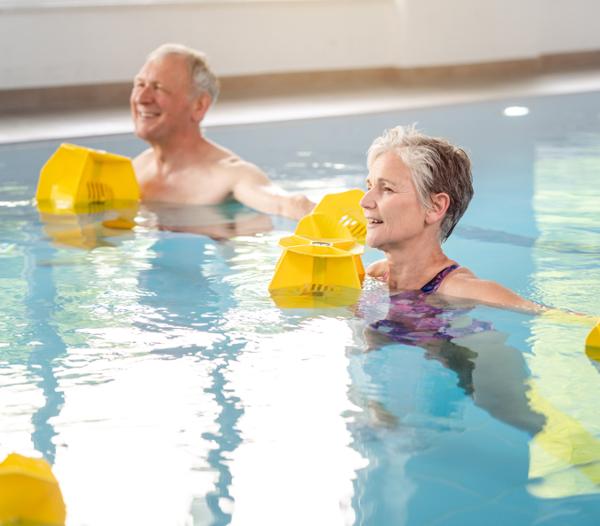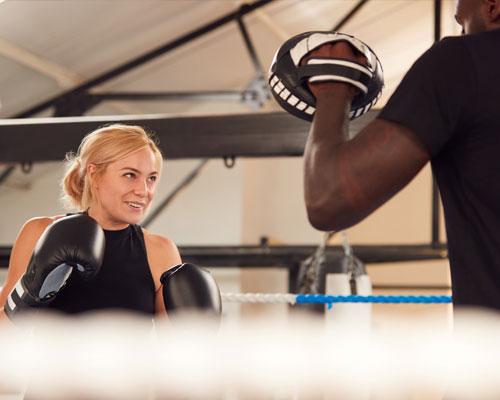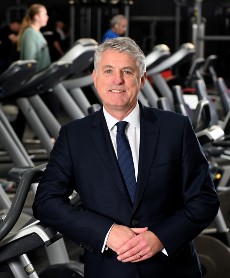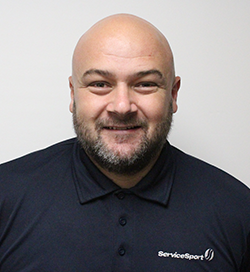features
Interview: Mike Farrar
Harnessing the healthcare network to further the fitness sector’s ambitions is the core purpose of UK Active’s new chair, as he explains to Kate Cracknell
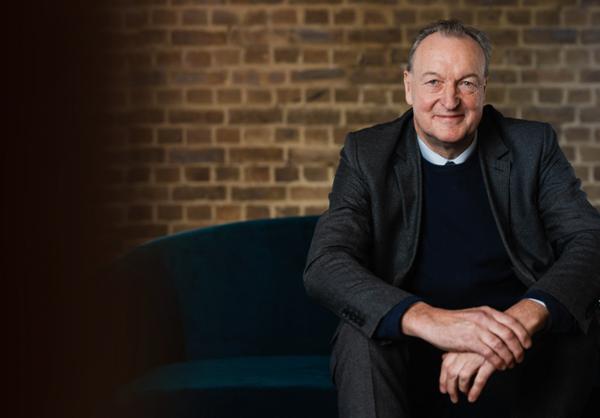
You were previously CEO of the NHS Confederation. Tell us about its work
It’s the membership body for the whole of the NHS and it has three main functions. One is to influence and shape government policy. The next is to help its members network, share best practice and information to do their jobs better. And the third is to speak to the public on behalf of the NHS; if I were in that role now, I would be talking a lot about the need to reduce waiting lists and address industrial relations.
Its role is very similar to UK Active’s in many ways: convening, sharing best practice, speaking to government and trying to get an important message out to the public.
What drew you to the UK Active role?
I’ve always loved sport. Sadly I was only ever good enough to play semi-professionally rather than going full-time, but being involved in sports policy and sports management, supporting people to become brilliant at the elite end of the scale or simply get involved at the other end… It’s always been a passion and I’ve taken on related roles both nationally and locally.
But when the pandemic struck, a lot of the organisations I was involved with really needed a full-time chair for a while – someone who could help their CEOs lobby and campaign. I felt I couldn’t do that, so stood down and went to work for free at King’s Hospital in London.
I try to keep my moral compass in the right place – I do a lot of charity work generally – and wanted to do my bit to help.
As we began to come out of the pandemic, to the extent that we have, I was kicking my heels and felt a need to re-engage with sports and leisure. And then the role of UK Active chair came up.
There’s a real purpose to the role and the organisation, which is important to me: I have a strong sense of social justice, much of which comes from my health service and public sector work, and I’m not interested in doing things that don’t add value. I consider myself fortunate and privileged to have been offered the role.
How do you define UK Active’s sector?
Although I sometimes use ‘sports and leisure’ as a shortcut when I’m speaking I have the broadest definition of the physical activity sector and welcome the fact that UK Active is a broad church.
I also believe that – if our mission is to get more people, more active, more often – at some level we have to be agnostic about where and how people choose to do this. The message has to be about activity for all, to benefit your mental, physical and social health, as well as your employability.
Of course, we want to grow our sector and I believe everyone has a role to play. The private sector, with its strong focus on ROI, can be very clear and precise about its offer and has already done great work in creating a very good, at-scale, low-cost offering. Meanwhile, the public sector has some really interesting messages about being local, being connected to place, connecting with community groups and citizens and social prescribing. I think the public and private sectors can learn from each other, just as I’ve seen in other spheres, such as health and education.
How do we get five million more people active?
First, we absolutely need to be ambitious; it’s no good saying we want to be a little bit better than we are now.
Next, rather than just having an aspirational goal of five million and asking government for money to support us, we need to pinpoint the specific schemes we think will deliver those numbers and put a very specific case to each potential partner.
For example, if we connect better with social prescribing by ensuring GPs really understand our offer, it might bring half a million new exercisers. Then there are the universities, all competing for students, with sports facilities one of the key selling points. How can we help them develop their sports and leisure offer, and how many more customers might that bring us?
Other very interesting examples include musculoskeletal (MSK) programmes and cancer prehab and rehab, both of which are the subject of current UK Active pilot schemes (see boxout).
With an MSK programme, the mobility people get from exercise might mean they can wait a little longer for a knee or hip operation, or ease the pain to the point they don’t want the treatment any more. That’s going to be of huge appeal to a pressured NHS.
Meanwhile, we know the efficacy of chemotherapy can be enhanced by having an activity regime alongside it. Indeed, however you’re being treated for cancer, you’ll do better if you’re also maintaining a level of physical activity and getting cardiovascular benefit. So, we can ask what our sector can do to improve outcomes for people with cancer?
Child and adolescent mental health is another area I think we could really help. I don’t yet have the details of a specific programme, but it makes an awful lot of sense to get young people who were socially isolated during the pandemic back into communal activity. If we can bring them into UK Active member facilities – where they work with trainers and exercise around others – the reduction in social isolation will be massively important for a generation that’s really suffered.
So those are some specific areas we can explore, where I believe there’s untapped potential, but we also need to look at provision and inclusivity in our facilities. We must speak to three key groups: the unmotivated, who don’t want to engage in our current offering; the unable, which is about affordability, equality and access; and the unwelcome, who simply don’t see themselves represented at gyms and don’t have a good enough experience to return.
To attract these groups, we have to find new ways of speaking about what we do. We have to get better at representing people’s specific interests and to embrace whatever opportunities people do have to be active, rather than offering a standard product and expecting them to come to us. We have to build diversity in our communities, live our values at every touchpoint and be good at what we do, actually helping people achieve whatever goal they come to us with – and making sure they recognise their achievements.
Can our sector really be part of healthcare?
The need is clearly there in terms of the health, economic and social contribution our sector can make. Certainly the only way the NHS will get itself back on track is by working smarter, both in terms of its own staff’s health and, I believe, by offering some kind of support to every patient with a chronic condition. Of course, this is where physical activity comes in.
However, we have to be ready to grow in a smart way, looking at who’s prepared to fund our sector and making a far more precise business case to secure that funding. We can’t keep saying ‘get people to be active through working with us and in 10 years’ time you’ll have a healthier nation’. Of course that’s true, but it’s very hard for people – whether it’s government, education, the healthcare sector or any other potential partner – to react positively to that. It’s too broad and too long-term. They want to know how we can help them this week.
So instead of trying to persuade government to give less money to the health service and more to DCMS – which is a very hard argument to make – we have to pinpoint where we can make a difference and directly address potential partners, showing how we can help them spend their budgets effectively to get more for every pound invested.
We still need to lobby government directly – something UK Active does very effectively. Politicians are on the back foot and all over the place at the moment, trying to work miracles. Making a case to government gives people legitimacy to act, but we also need to create a new channel, going directly to opinion leaders in the health service to develop ‘demonstrator projects’ that others will follow.
It’s about speaking to CEOs in the health service and CEOs of large hospitals, to say ‘let’s give this a go’.
I know who has the need, the appetite, the bandwidth and who’s open to this conversation. Of the 50 most important people in the NHS at the moment, I have around 40 on speed dial and I want to bring that personal network to the job in a way that’s systematised, so it isn’t dependent on me.
We’re already speaking to Sir Jim Mackey, for example, who I see as a key influencer in the NHS in his role to reduce waiting lists, as well as Jonathon Marron, who heads the Office for Health Improvement and Disparities. We’re already on their radar with pilot projects that we want to scale up so they’re accessible nationally.
There will always be recalcitrant voices, of course, so we have to find the enthusiasts and start with them, proving we can move something in the right direction by working together.
In time, the people who thought they were the majority will realise they’re the minority – that others are enjoying benefits, such as reduced waiting lists, that they aren’t experiencing. And all of a sudden, they’ll come to us and ask ‘what was it you were offering again?’ We’ll reach a tipping point of active programmes and the rest will follow.
How do we make our case?
We will only connect if we speak to their in-tray. Looking at healthcare, at the moment that means showing how we can help with waiting lists, ambulance handovers and operating within their budgets.
Ambulance handovers are harder for us to directly impact, although we can take weight away from the ambulance service by supporting those with chronic conditions. But with waiting lists, we have a real opportunity to help.
There are around seven million people on a waiting list at the moment, yet the NHS is having to cancel too many operations on the day because people have become deconditioned while waiting and are no longer fit for their operation. Of course, for each cancellation, there’s somebody else waiting who could have had that slot. Instead, the list keeps growing.
This is where our musculoskeletal work is particularly interesting, not only supporting people who are on the list, but also those who might want to come off the list, because we can support them in a different way.
We can definitely help with budgets. With rising costs and growing demand, the NHS needs a 4.3 per cent annual rise in its budget just to stand still. For the last decade, it’s been 1.5 per cent. At the moment, it’s around 3.5 per cent. It means the health service needs to extract as much value as possible from every pound spent.
One immediate opportunity is that the NHS is currently spending around £4bn a year on locums and other temporary labour because its own staff are off sick. If our sector can put in place a big workplace programme to keep NHS staff in work – to keep them fit and well for their shifts, both physically and mentally – the saving will go straight to the bottom line of the NHS and it’s a win-win, also contributing to our ‘five million more people more active’ goal.
These are the conversations we’re having with senior figures in the NHS.
How ready is our sector for all this?
I can’t say we’re completely ready in every place, but everyone I’ve spoken to about the opportunity has been very enthusiastic and ready to do more.
In this respect, I’ve been hugely impressed by both the quality of the UK Active team and the vision of the sector’s leadership. I’ve had no push-back at all. In some sectors, faced with the sort of challenges we’re all facing right now, the best mindset you could hope for would be stoicism: “We will keep going.” In the fitness sector, I see organisations wanting to up their game to take on the challenges.
These new opportunities may require us to look at career progression, implementing some sort of skills escalator to help health club staff and PTs understand particular health conditions.
We’ll also need to share best practice to ensure operators across the sector – private and public, chains and independents – are delivering something that’s absolutely spot on if people are referred to us through social prescribing, for example.
This could be things such as dementia-friendly swimming, which can fill a pool even in off-peak times.
So, we need to invest and evolve. However, as the need grows – and as businesses are increasingly judged on their social contribution – the commercial argument for heading in this direction becomes ever stronger.
Does anything else need to change?
One area where I think we can improve is data. First, we need to provide better feedback to potential customers about our impact. We all have this great purpose, but how many of us actually demonstrate that we’re doing something good?
It would be interesting to take a person-centred, self-assessment approach to measurement. We could then present numbers such as ‘X per cent of our members achieved their goal’ to give others confidence we can make a real difference. We need that feedback loop so people can see how effective we are at what we do.
We also need to gather the right data to make a strong business case to potential partners. At the moment, the data we’re counting doesn’t tend to focus on those who’d benefit most. If you look at national targets, for example – 3 x 30 minutes exercise per week and so on – we end up counting participants who were active anyway, rather than those who are inactive, perhaps socially isolated, absent from work, maybe even on benefits, with high sickness rates stemming from chronic physical and mental conditions. With support to get physically active, many of these individuals could be returned to the workforce. We need to show how we can do this and deliver strong social, economic and health value.
I’d like to see government joining up more. The challenge for us is that we get channelled through DCMS, but we also want to speak directly to the health department, the Treasury, local government, business and education. This means we need them to speak to each other, otherwise we come in as a smaller voice than the hospitals and the schools when really these are all part of our story.
My message to government is, ‘We’re already having joined-up conversations at an operational level. Could you please try and do the same?’
What drives you personally?
I want to lift the sector, move it forward, stretch it, help it become what it really can be. I want to change our image and reputation to a point where you could ask pretty much anyone and they’d agree we’re a service industry for everyone, that we support people to stay well, that we get more people involved and that we’re good at what we do. And I’m in it for as long as people want me to be involved.
But crucially, there’s always an element of social justice in my agenda. Would I be happy if, in five years’ time, we had five million more people active, but they were all from the highest end of the socioeconomic spectrum? Honestly, I would be slightly disappointed. Because for me, within UK Active’s five million goal, there’s a more subtle point about helping those with the greatest need – the people who should have access to our services, but currently don’t. I would absolutely love it if we could go some way to addressing that.
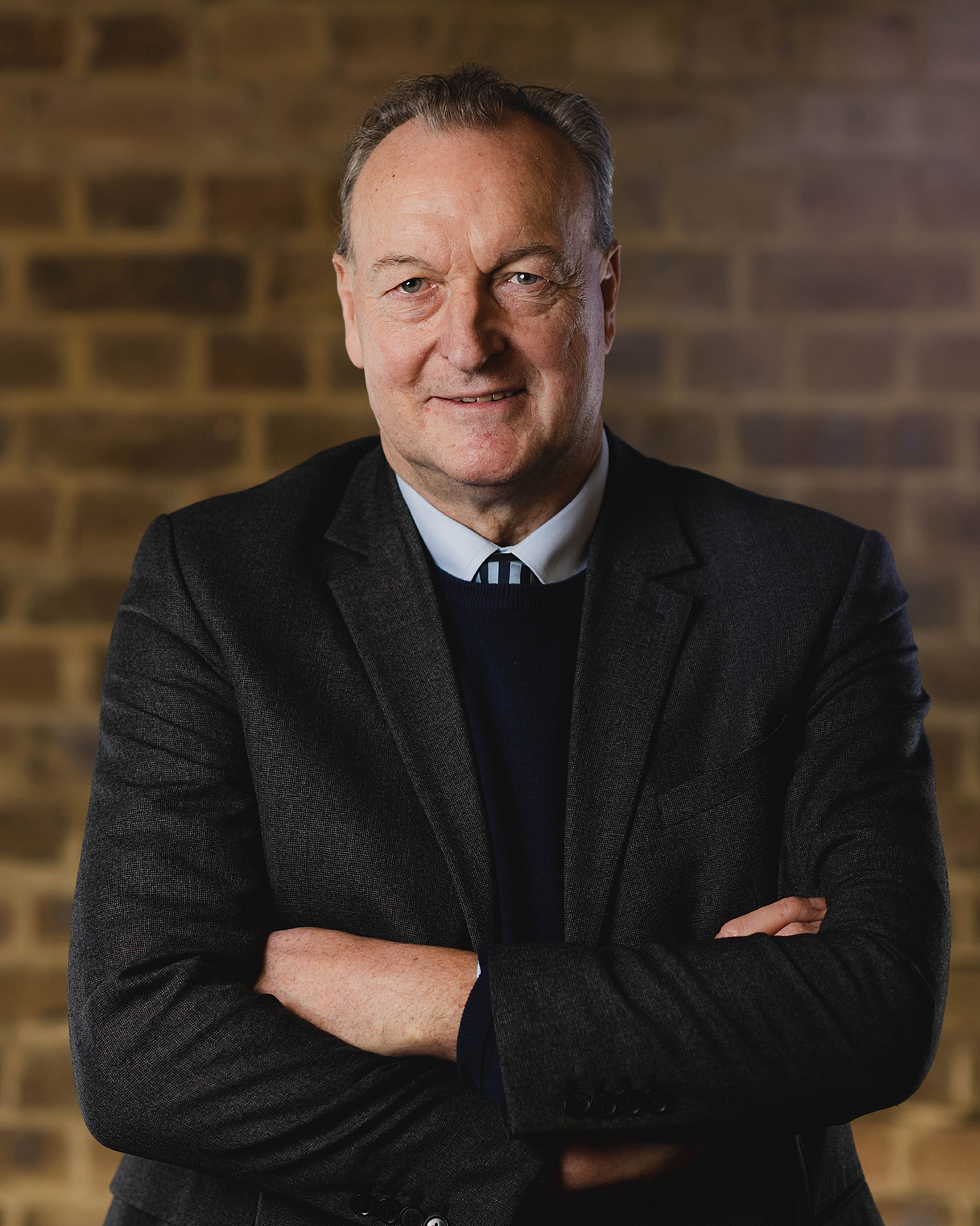
The new chair of UK Active, Mike Farrar, has laid out his vision for the organisation and the sector.
With his background in the NHS, he sees opportunities for the physical activity sector to make a difference to the crisis the NHS is currently experiencing
Farrar suggests the physical activity sector can help keep NHS staff fit to cut its £4bn a year locum bill
That people waiting for operations can be kept well so they’re ready for surgery, avoiding cancellations
That pilot programmes which have proven efficacy, such as cancer prehab and rehab and musculoskeletal can be rolled out nationally.
Farrar wants government departments to be more joined up, so the physical activity sector can be ‘seen’ for its breadth and be able to transact with all relevant departments, which include sport and activity, health, the Treasury, local government, business and education
One key goal is five million people more active by 2030
He says career progression, including some sort of skills escalator, will be needed to ensure staff are ready to deliver services to medical standards
This project aims to transform gyms, pools and leisure centres into MSK community hubs, linking to charities such as Arthritis Action and Versus Arthritis and delivering knee, hip and back rehabilitation via two evidence-based interventions: Good Boost and Escape-pain. Currently piloting in 15 sites, the goal is to expand to 100 in 2023.
The opportunity here is to take programmes, such as GM Cancer in Manchester, to national scale, delivering multi-modal pre-surgery ‘prehab’ and post-operative recovery programmes for cancer patients in a community leisure centre setting.
With a goal of improving quality of life and long-lasting post-operative outcomes for patients, these dual prongs can together optimise the health benefits of the treatment, reducing pressure on healthcare services throughout the cancer pathway.
Mike Farrar’s CV immediately commands respect: he’s been CEO of the NHS Confederation, chair of the National Strategic Health Authority Chief Executives’ Group and chair of both Sport England and Swim England.
He’s also honorary fellow of the Royal College of General Practitioners and the Royal College of Physicians, chair of Keele University and was sports and health tsar for London 2012... and now he’s chair of UK Active.
